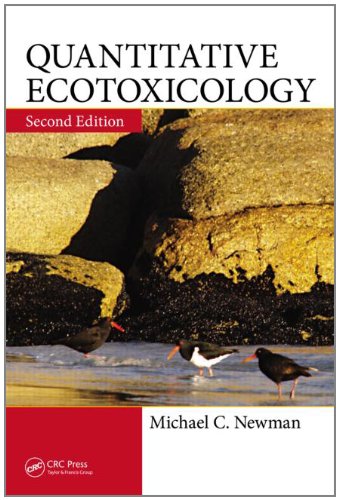

Most ebook files are in PDF format, so you can easily read them using various software such as Foxit Reader or directly on the Google Chrome browser.
Some ebook files are released by publishers in other formats such as .awz, .mobi, .epub, .fb2, etc. You may need to install specific software to read these formats on mobile/PC, such as Calibre.
Please read the tutorial at this link. https://ebooknice.com/page/post?id=faq
We offer FREE conversion to the popular formats you request; however, this may take some time. Therefore, right after payment, please email us, and we will try to provide the service as quickly as possible.
For some exceptional file formats or broken links (if any), please refrain from opening any disputes. Instead, email us first, and we will try to assist within a maximum of 6 hours.
EbookNice Team

Status:
Available0.0
0 reviewsQuantitative Ecotoxicology, Second Edition explores models and methods of quantitative ecotoxicology at progressively higher biological scales using worked examples and common software packages. It complements the author’s previous books, Fundamentals of Ecotoxicology, Third Edition and Ecotoxicology: A Comprehensive Treatment.
Encouraging a more rigorous inferential approach to research, the book examines the quantitative features of the science of ecotoxicology. The first chapters lay the foundation by introducing fundamental concepts and definitions. The author traces the historical perspective, rationale, and characteristics of scientific ecotoxicology as well as the general measurement process. He also considers methodologies for defining and controlling variance, which could otherwise exclude valid conclusions from ecotoxicological endeavors.
The book then discusses ecotoxicological concepts at increasing levels of ecological organization and outlines quantitative methods used to measure toxicant accumulation and effects. Reflecting the importance of establishing type I and type II error rates, it highlights design issues, particularly sample size and power estimation. The final chapter summarizes the book with a brief discussion of ecotoxicology from a nonregulatory perspective.
Extensively updated, this second edition has been expanded to include terrestrial as well as aquatic ecotoxicology. Requiring only a basic knowledge of statistics, this highly readable book is suitable for graduate students and researchers as well as practicing environmental scientists and engineers. It guides readers to better understand the fate and effects of toxicants in the biosphere—and helps them frame this understanding in quantitative terms.
What’s New in This Edition